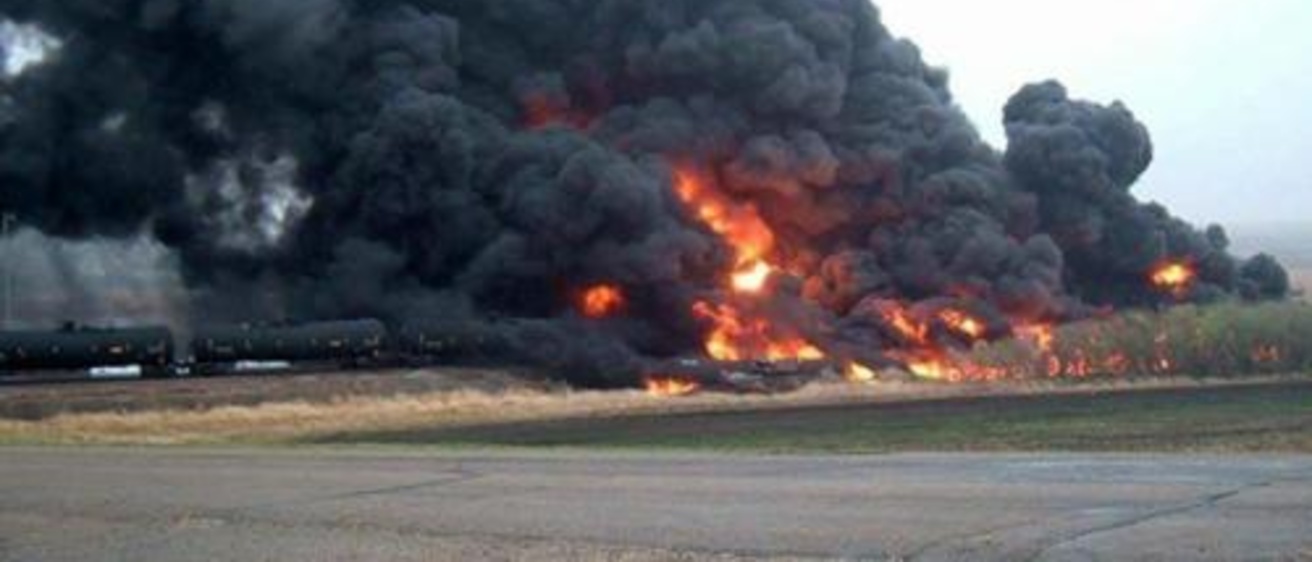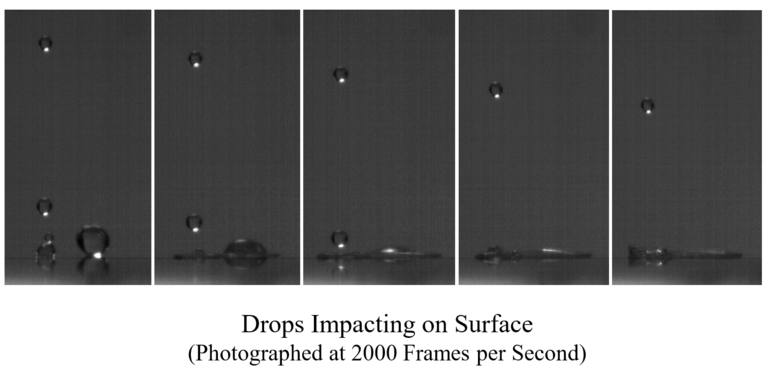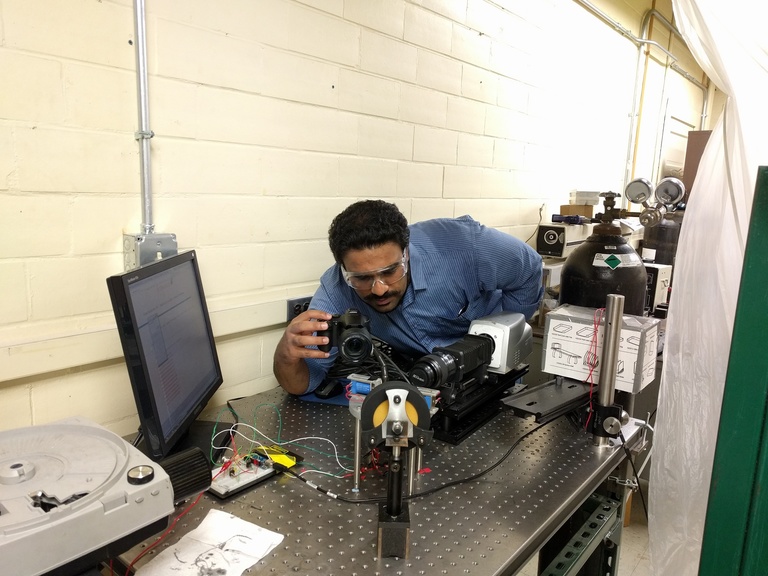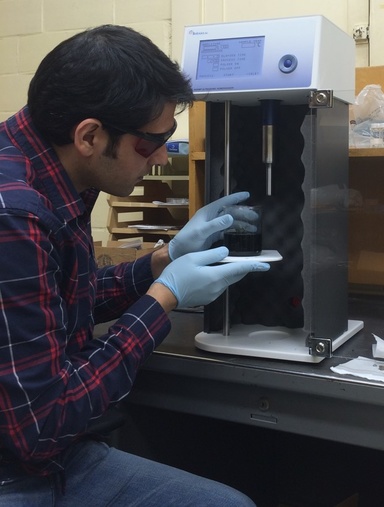
Photo credit: New York Daily News, May 06, 2015
Breadcrumb
Making crude oil transport safer
Featured image: Massive fire after crude oil train derailment in North Dakota. Photo credit: New York Daily News, May 06, 2015

There have been several issues with train derailments in the Midwest in the past years. These incidents can be especially devastating if the trains are carrying crude oil, which in the event of a derailment spills out and causes a massive fireball. Our previous research has shown that adding nanomaterials and polymers to pure hydrocarbons like Dodecane will cause their splashing behavior to change significantly, as in that small droplets of fuel do not form and the liquid remains cohesive. Small droplets are at the most risk for catching fire. We are hoping to expand this research by finding appropriate nanomaterials or polymers to add to the crude oil before it's shipped out, so that in the event of a derailment the chances of it causing a fireball are smaller.
This involves taking high-speed pictures of a droplet of test fuel as it falls from a distance and strikes a hard surface, and analyzing the pictures to understand its spattering behavior.
In addition to spilling research we also investigate how fast or slow fuel will burn when we add a polymer or a nanomaterial to it. We do this by burning a small droplet of test mixture while it's strung up on a wire, and taking pictures of it with a high speed camera while it burns. This allows us to computer burning rates and evaporation rates. Past research has shown that adding a polymer to a pure hydrocarbon causes its fire point to increase, meaning it is less likely to catch fire. Again, we are hoping to replicate such behavior in crude oil as well.

